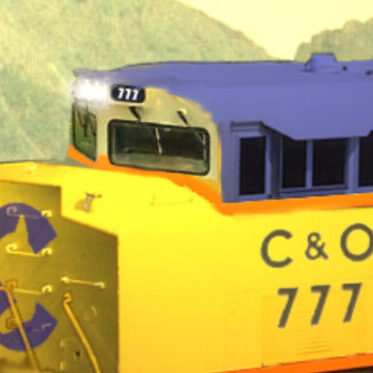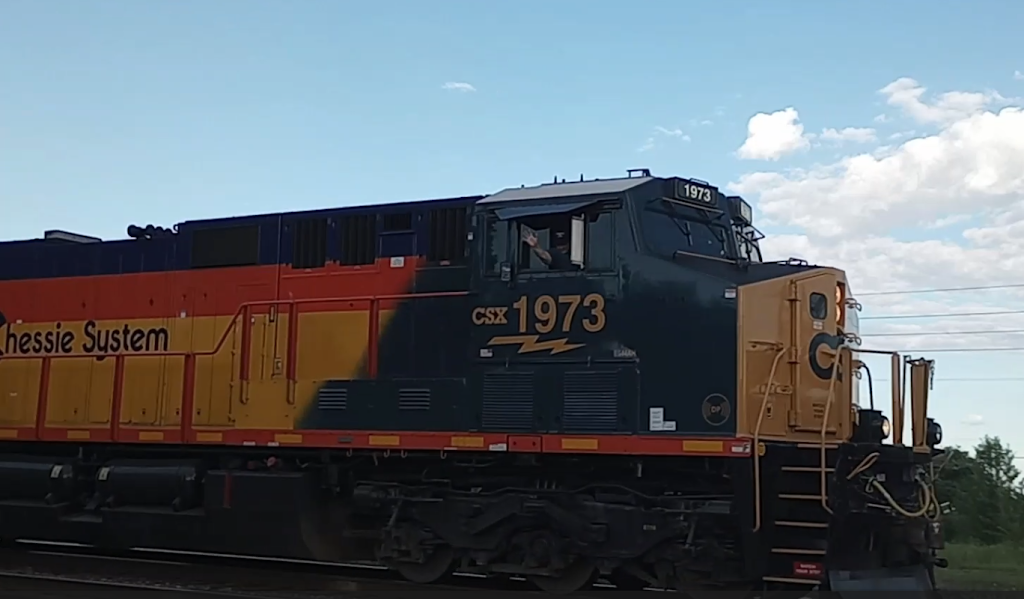A “heritage unit” is described by Wikipedia as a railroad locomotive painted in an honorary paint scheme; usually the paint scheme is that of a now-defunct railroad that merged with or was acquired by the locomotive’s owner. This sounds like a good definition, which is different from a commemorative locomotive, like CSX’s Spirit of Our Armed Forces honoring the armed forces (above).
The over valuing of paint jobs on locomotives have nothing to do with heritage! When the railroads over-hype these locomotives, they at the same time devalue their own heritage and history, a heritage and history that’s about more than just locomotives. Painted locomotives are to be chased, caught and bragged about in games of one-upmanship between railfans. These same railfans, who could care less about CSX’s history, mock CSX’s heritage locomotives because CSX doesn’t “paint the whole thing.” The notion among railfans that “not painting the whole thing” is a reason to hate CSX should show us just how much railfans place a painted locomotive in higher esteem than the actual heritage of how the honored railroad got into the CSX family to receive such an honor.
 |
| CSX1973 Chessie System Heritage Locomotive |
It is a family of deep and rich heritage that contains the old and famed Baltimore & Ohio, the Chesapeake and Ohio (and Chessie Kitten), and “X,”
much more, the railroad part of the “multiplication of X” of CSX painted into CSX heritage units by leaving the cab in CSX scheme! 💙💛Let’s elevate the history and real heritage over the paint jobs on “heritage” locomotives. There are some very good books on the history of the Baltimore & Ohio, the Chesapeake & Ohio, and the like, and railroad history before 1930, but very few, if any, books on the heritage and history of modern railroads. The books we do have out there is little serious treatment of the history of modern railroads, and are largely picture books of locomotives, railyards and trains.
What is a greater personal satisfaction and value is knowing the history of the modern railroads that goes beyond admiring locomotives. For example: Who were the leaders and what part did they play in railroad history? What value to the railroad industry did this merger or that merger bring? What did the merger of this railroad to that one bring to the service of public interest? Why did the Interstate Commerce Commission approve the merger between Seaboard and Chessie into CSX?!
Railfan’s answer: “So CSX can give us half painted, heritage locomotives to chase around and brag about on YouTube and Facebook.”

